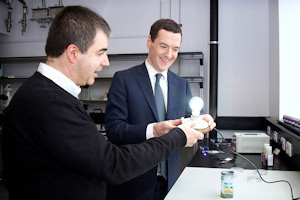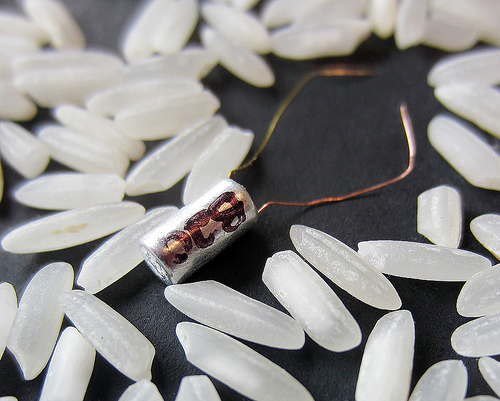This is going to be relatively short and sweet(ish). Starting with the 2017 review:
Nano blogosphere and the Canadian blogosphere
From my perspective there’s been a change taking place in the nano blogosphere over the last few years. There are fewer blogs along with fewer postings from those who still blog. Interestingly, some blogs are becoming more generalized. At the same time, Foresight Institute’s Nanodot blog (as has FrogHeart) has expanded its range of topics to include artificial intelligence and other topics. Andrew Maynard’s 2020 Science blog now exists in an archived from but before its demise, it, too, had started to include other topics, notably risk in its many forms as opposed to risk and nanomaterials. Dexter Johnson’s blog, Nanoclast (on the IEEE [Institute for Electrical and Electronics Engineers] website), maintains its 3x weekly postings. Tim Harper who often wrote about nanotechnology on his Cientifica blog appears to have found a more freewheeling approach that is dominated by his Twitter feed although he also seems (I can’t confirm that the latest posts were written in 2017) to blog here on timharper.net.
The Canadian science blogosphere seems to be getting quieter if Science Borealis (blog aggregator) is a measure. My overall impression is that the bloggers have been a bit quieter this year with fewer postings on the feed or perhaps that’s due to some technical issues (sometimes FrogHeart posts do not get onto the feed). On the promising side, Science Borealis teamed with the Science Writers and Communicators of Canada Association to run a contest, “2017 People’s Choice Awards: Canada’s Favourite Science Online!” There were two categories (Favourite Science Blog and Favourite Science Site) and you can find a list of the finalists with links to the winners here.
Big congratulations for the winners: Canada’s Favourite Blog 2017: Body of Evidence (Dec. 6, 2017 article by Alina Fisher for Science Borealis) and Let’s Talk Science won Canada’s Favourite Science Online 2017 category as per this announcement.
However, I can’t help wondering: where were ASAP Science, Acapella Science, Quirks & Quarks, IFLS (I f***ing love science), and others on the list for finalists? I would have thought any of these would have a lock on a position as a finalist. These are Canadian online science purveyors and they are hugely popular, which should mean they’d have no problem getting nominated and getting votes. I can’t find the criteria for nominations (or any hint there will be a 2018 contest) so I imagine their nonpresence on the 2017 finalists list will remain a mystery to me.
Looking forward to 2018, I think that the nano blogosphere will continue with its transformation into a more general science/technology-oriented community. To some extent, I believe this reflects the fact that nanotechnology is being absorbed into the larger science/technology effort as foundational (something wiser folks than me predicted some years ago).
As for Science Borealis and the Canadian science online effort, I’m going to interpret the quieter feeds as a sign of a maturing community. After all, there are always ups and downs in terms of enthusiasm and participation and as I noted earlier the launch of an online contest is promising as is the collaboration with Science Writers and Communicators of Canada.
Canadian science policy
It was a big year.
Canada’s Chief Science Advisor
With Canada’s first chief science advisor in many years, being announced Dr. Mona Nemer stepped into her position sometime in Fall 2017. The official announcement was made on Sept. 26, 2017. I covered the event in my Sept. 26, 2017 posting, which includes a few more details than found the official announcement.
You’ll also find in that Sept. 26, 2017 posting a brief discourse on the Naylor report (also known as the Review of Fundamental Science) and some speculation on why, to my knowledge, there has been no action taken as a consequence. The Naylor report was released April 10, 2017 and was covered here in a three-part review, published on June 8, 2017,
I have found another commentary (much briefer than mine) by Paul Dufour on the Canadian Science Policy Centre website. (November 9, 2017)
Subnational and regional science funding
This began in 2016 with a workshop mentioned in my November 10, 2016 posting: ‘Council of Canadian Academies and science policy for Alberta.” By the time the report was published the endeavour had been transformed into: Science Policy: Considerations for Subnational Governments (report here and my June 22, 2017 commentary here).
I don’t know what will come of this but I imagine scientists will be supportive as it means more money and they are always looking for more money. Still, the new government in British Columbia has only one ‘science entity’ and I’m not sure it’s still operational but i was called the Premier’s Technology Council. To my knowledge, there is no ministry or other agency that is focused primarily or partially on science.
Meanwhile, a couple of representatives from the health sciences (neither of whom were involved in the production of the report) seem quite enthused about the prospects for provincial money in their (Bev Holmes, Interim CEO, Michael Smith Foundation for Health Research, British Columbia, and Patrick Odnokon (CEO, Saskatchewan Health Research Foundation) October 27, 2017 opinion piece for the Canadian Science Policy Centre.
Artificial intelligence and Canadians
An event which I find more interesting with time was the announcement of the Pan=Canadian Artificial Intelligence Strategy in the 2017 Canadian federal budget. Since then there has been a veritable gold rush mentality with regard to artificial intelligence in Canada. One announcement after the next about various corporations opening new offices in Toronto or Montréal has been made in the months since.
What has really piqued my interest recently is a report being written for Canada’s Treasury Board by Michael Karlin (you can learn more from his Twitter feed although you may need to scroll down past some of his more personal tweets (something cassoulet in the Dec. 29, 2017 tweets). As for Karlin’s report, which is a work in progress, you can find out more about the report and Karlin in a December 12, 2017 article by Rob Hunt for the Algorithmic Media Observatory (sponsored by the Social Sciences and Humanities Research Council of Canada [SHRCC], the Centre for Study of Democratic Citizenship, and the Fonds de recherche du Québec: Société et culture).
You can ring in 2018 by reading and making comments, which could influence the final version, on Karlin’s “Responsible Artificial Intelligence in the Government of Canada” part of the government’s Digital Disruption White Paper Series.
As for other 2018 news, the Council of Canadian Academies is expected to publish “The State of Science and Technology and Industrial Research and Development in Canada” at some point soon (we hope). This report follows and incorporates two previous ‘states’, The State of Science and Technology in Canada, 2012 (the first of these was a 2006 report) and the 2013 version of The State of Industrial R&D in Canada. There is already some preliminary data for this latest ‘state of’ (you can find a link and commentary in my December 15, 2016 posting).
FrogHeart then (2017) and soon (2018)
On looking back I see that the year started out at quite a clip as I was attempting to hit the 5000th blog posting mark, which I did on March 3, 2017. I have cut back somewhat from the 3 postings/day high to approximately 1 posting/day. It makes things more manageable allowing me to focus on other matters.
By the way, you may note that the ‘Donate’ button has disappeared from my sidebard. I thank everyone who donated from the bottom of my heart. The money was more than currency, it also symbolized encouragement. On the sad side, I moved from one hosting service to a new one (Sibername) late in December 2016 and have been experiencing serious bandwidth issues which result on FrogHeart’s disappearance from the web for days at a time. I am trying to resolve the issues and hope that such actions as removing the ‘Donate’ button will help.
I wish my readers all the best for 2018 as we explore nanotechnology and other emerging technologies!
(I apologize for any and all errors. I usually take a little more time to write this end-of-year and coming-year piece but due to bandwidth issues I was unable to access my draft and give it at least one review. And at this point, I’m too tired to try spotting error. If you see any, please do let me know.)

